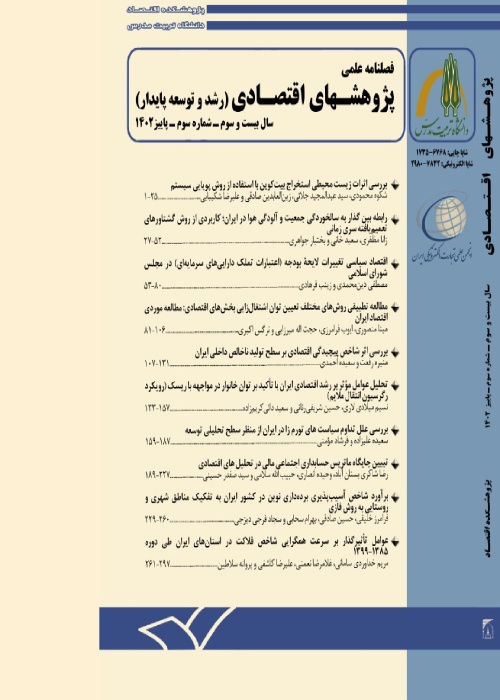Analysis of Factors Affecting Iran's Economic Growth with an Emphasis on the Household Risk Preparation (Smooth Transition Regression Approach)
The household is an important economic institution, which forms a major part of people's attitudes and beliefs and plays a key role in raising children and the workforce. The vulnerability and ability of this institutional unit to deal with risks are of important impacts on economic performance. On the other hand, developing countries usually face a lack of capital due to low domestic savings and limited access to capital markets. The entry of foreign capital through the receipt of official development aid leads to access to foreign markets with modern technologies and the acquisition of management skills, thus contributing to economic growth. International trade also leads to the provision of capital and machinery, which are necessary for economic development. Thus, the purpose of this article is to analyze the effect of the household risk preparation, official development aid and the trade openness on Iran's economic growth during 1997-2020.
In this article, firstly, following the World Development Report (2014) and using the variables of the sub-indices of access to financial resources, social support, human capital and the economic capacity of the government, the combined index of the household risk preparation is calculated by the method of Principal Components Analysis (PCA) in order to weight the selected variables. Then the following model is specified according to Foa (2014) and Zhao et al. (2021). The model is estimated using smooth transition regression (STR)
GDPGt=σ'Xt+Ω'Xt. Tγ,c,st+ξt (1) In equation (1), Xt is a vector of independent variables (Household risk preparation, official development aid, trade openness, labor force, physical capital and labor productivity), σ'=(σ0,σ1,…,σz)' is the vector of the linear part's coefficients and Ω'=(Ω0,Ω1,…,Ωz)' is the vector of the nonlinear part's coefficients. c is the threshold level, γ is the transition speed between regimes, st is the transition variable, T is the transition function. In the STR model, the transition between different regimes is done by the logistic function (LSTR) or the exponential function (ESTR). The linearity of the model should be tested and the appropriate transition variable should be selected.
The results indicate that the household risk preparation index is the transition variable with one threshold level and two regimes (LSTR1), which by passing the threshold level of 0.789% leads to the transfer of the growth function from the first regime to the second. On the other hand, household risk preparation index, trade openness, capital, labor and labor productivity have positive effects on economic growth in both regimes, but their effects have been intensified in the second regime. This is despite the fact that the variable of official development aid has a positive effect on economic growth in the first regime, but it has no significant effect in the second regime.
According to the results, it is recommended to pay attention to the most important factors affecting household risk preparation, such as the household's access to facilities and financial credits. Since many households in developing countries including Iran do not have accurate knowledge of financial concepts, types of loans and credits, and conditions for receiving loans and credits, it is recommended to increase the level of household awareness in using this type of financial services. The share of loans and credits to the households should be increased and the necessary measures should be taken to facilitate the receipt of loans. On the other hand, it is recommended to design policies in order to increase the minimum wage according to the competence of the workforce, provide specialized training before entering higher education levels, and hold training courses for parents in order to increase investment in the education and health of children. Also, the development of programs based on free and universal health, effective management of foreign debts by directing borrowing resources to highly productive sectors can be proposed to improve the household risk preparation.
- حق عضویت دریافتی صرف حمایت از نشریات عضو و نگهداری، تکمیل و توسعه مگیران میشود.
- پرداخت حق اشتراک و دانلود مقالات اجازه بازنشر آن در سایر رسانههای چاپی و دیجیتال را به کاربر نمیدهد.


